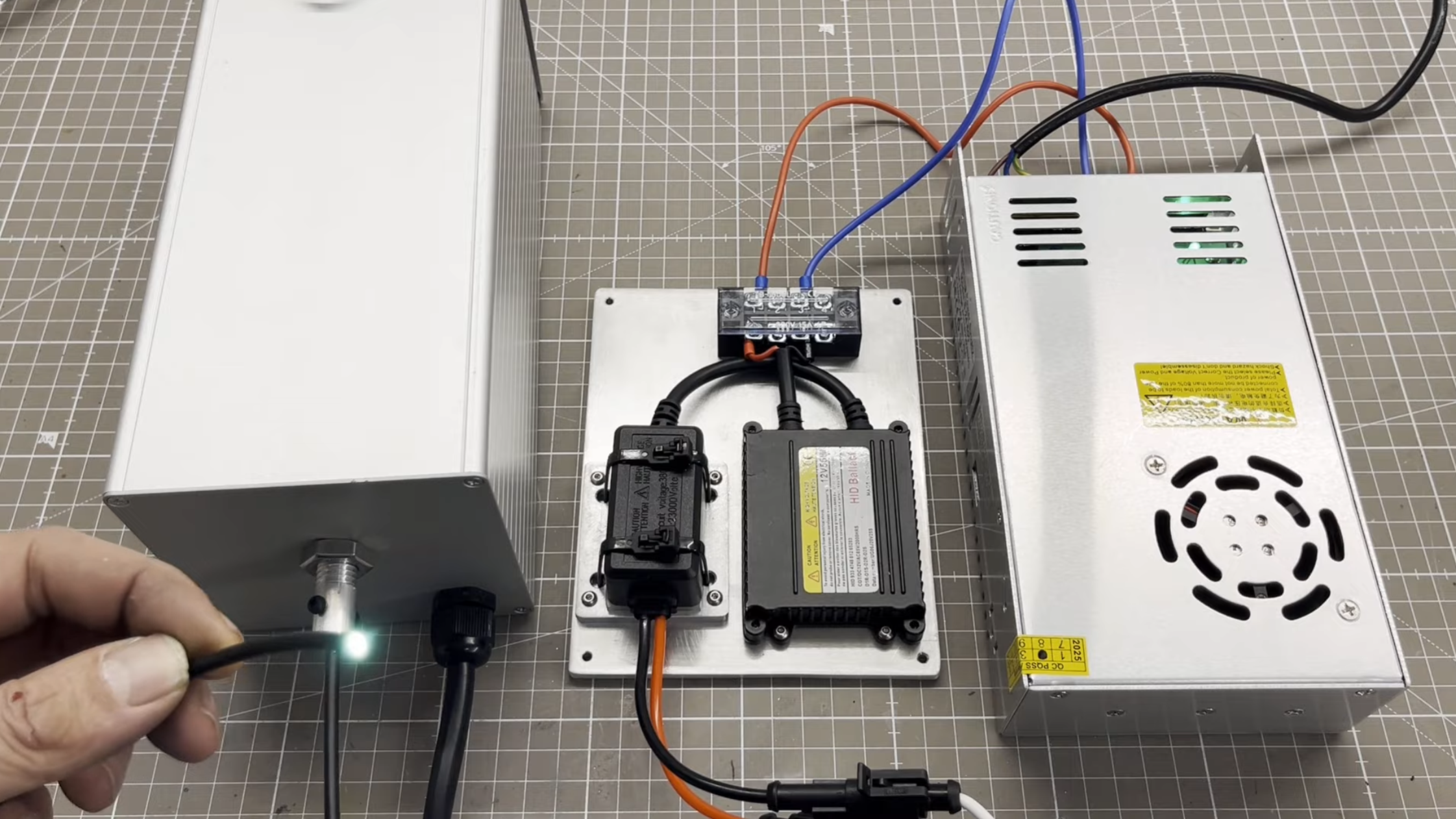Science
Innovator Builds Advanced Xenon Lamp for Enhanced Spectroscopy

A new light source designed for spectroscopy has been developed by inventor Markus Bindhammer, who recently showcased his creation in a video. The lamp utilizes an H7 xenon bulb, typically used in vehicle headlights, to produce a broad spectrum of wavelengths. This advancement aims to improve the calibration process of spectrometers, allowing for more accurate identification of wavelengths in various scientific applications.
The calibration of a spectrometer is essential for its functionality. Typically, this involves detecting characteristic peaks or dips in light from a known source, which serves as a reference for identifying other wavelengths. While many hobbyists use mercury-vapor fluorescent lights for this purpose, Bindhammer’s xenon lamp offers a more versatile alternative. Xenon gas discharge provides a wider band of wavelengths, making it particularly useful for absorbance spectroscopy. Moreover, it features several characteristic spikes in the infrared region, enhancing its utility.
The construction of the lamp showcases Bindhammer’s innovative approach. The design incorporates the xenon bulb at the center, supported by a concave mirror positioned behind it. This mirror is fashioned from a cut-open section of aluminum pipe, which reflects and enhances the light emitted by the bulb. In front of the bulb, a pair of converging lenses focuses the light onto the end of an optical cable made from PMMA, a material known for its superior transmission of ultraviolet light.
All components are securely held in place by aluminum brackets, ensuring stability during operation. The entire setup is encased in an aluminum housing, which features a fan on one end for cooling purposes. To prevent external light interference, a light trap covers the fan’s outlet, maintaining the integrity of the light source.
Although Markus Bindhammer has not yet tested the lamp with his spectrometer, initial observations suggest it should perform effectively. This project is part of a larger trend among amateur scientists and hobbyists who are increasingly creating their own spectrometers. The interest in DIY scientific equipment highlights the potential for innovation outside traditional commercial avenues.
In addition to Bindhammer’s work, there is a growing exploration of commercial scientific light sources. Understanding the differences and applications of these sources can provide valuable insights into the field of spectroscopy. As the demand for precise measurement tools continues to rise, innovations like Bindhammer’s xenon lamp may play a significant role in advancing the capabilities of spectrometers and enhancing scientific research overall.
-

 World2 weeks ago
World2 weeks agoGlobal Air Forces Ranked by Annual Defense Budgets in 2025
-

 World3 weeks ago
World3 weeks agoMass Production of F-35 Fighter Jet Drives Down Costs
-

 Science2 weeks ago
Science2 weeks agoTime Crystals Revolutionize Quantum Computing Potential
-

 Top Stories2 weeks ago
Top Stories2 weeks agoNew ‘Star Trek: Voyager’ Game Demo Released, Players Test Limits
-

 Top Stories2 weeks ago
Top Stories2 weeks agoDirecTV to Launch AI-Driven Ads with User Likenesses in 2026
-

 World2 weeks ago
World2 weeks agoElectrification Challenges Demand Advanced Multiphysics Modeling
-

 Lifestyle2 weeks ago
Lifestyle2 weeks agoLia Thomas Honored with ‘Voice of Inspiration’ Award at Dodgers Event
-

 Entertainment2 weeks ago
Entertainment2 weeks agoFreeport Art Gallery Transforms Waste into Creative Masterpieces
-

 Lifestyle2 weeks ago
Lifestyle2 weeks agoDiscover Reese Witherspoon’s Chic Dining Room Style for Under $25
-

 Health2 weeks ago
Health2 weeks agoGavin Newsom Critiques Trump’s Health and National Guard Plans
-

 Entertainment2 weeks ago
Entertainment2 weeks agoFast & Furious Coaster Hits the Track at Universal Studios
-

 Science2 weeks ago
Science2 weeks agoWaning Crescent Moon: What to Expect on October 17









